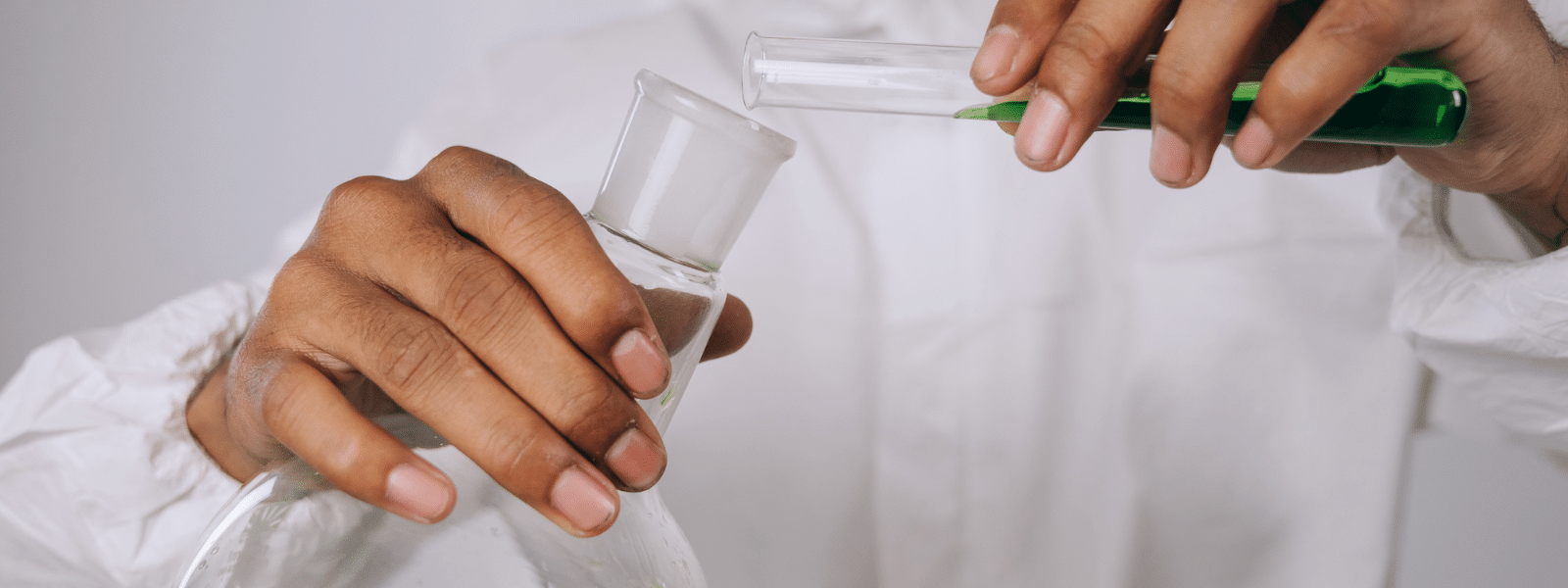Prepping Surfaces for Food Preparation
With the constant news stories of food-borne illness rising each and every year, there is a need for more effective cleaning and sanitation procedures and materials in the food manufacturing industry. To ensure the lowest possible chance of illness resulting from unclean surfaces, detergent-based cleaners are not potent enough to remove pathogens. In a study performed by J Barker, results showed that detergents failed to decontaminate tested surfaces in all but one trial. Consequently, when developing a surface preparation procedure, it is critical to use a detergent-based cleaner and a sanitizer once the cleaner has been used to ensure the lowest chance of organic food contamination!
Disinfectants vs Sanitizers
[av_one_half first av_uid=’av-126q3p5′]Similarities
- Designed to kill microorganisms
- Regulated by US EPA[/av_one_half]
[av_one_half av_uid=’av-oh3m1l’]Differences
- Sanitizers used on food-contact surfaces & soft surfaces
- Disinfectants used on hard surfaces
- Disinfectants used to destroy or irreversibly inactivate the microorganisms listed on their label
- Sanitizers used at lower concentrations & for shorter periods of time
- Disinfectants used at high concentrations & for longer times[/av_one_half]
It is important to remember that sanitizers are used to reduce bacterial count by 99.999% on food preparation surfaces within 30 seconds while disinfectants are used to kill all targeted organisms within 10 minutes. Therefore, utilizing both in a cleaning procedure will allow you to reduce chances of illness as much as possible.
Overview of a General Cleaning and Sanitizing Process for Food Contact Surfaces and Equipment
A usual method for cleaning and sanitizing food contact surfaces and equipment utilizes liquids and is in three steps: clean, rinse, sanitize.
Clean
- Cleaning agents remove dirt, germs, objects, and impurities from contact surfaces and equipment.
- For regulatory purposes, the cleaning agent is not required to be organic.
- All cleaners or detergents used must meet the FDA’s requirements.
- Cleaners and detergents have been developed to be rinsed off, so a rinse step is needed to prevent the contamination of organic foods from the cleaning agent’s residues.
Rinse
- Rinsing with potable water will remove the cleaning agents from surfaces and equipment.
Sanitize
- Sanitizers are used on cleaned surfaces to make certain that the surface is free of pathogenic microbes.
- In most state and federal food safety protocols, a sanitizing step is required for food contact surfaces.
- Since sanitizers are designed to leave anti-bacterial residue on food contact surfaces, they aren’t allowed to be in contact with organic food.
- Consequently, USDA organic regulations permit the use of a few synthetic sanitizers for food surfaces.
Allowed Cleaners, Detergents, and Soaps
The only requirement for cleaners, detergents, and soaps in the food surface cleaning process is that they must be prevented from coming in contact with organic food. Thus, cleaning agents are required to be rinsed from the food contact surface prior to use. The USDA organic regulations do not specifically list any approved cleaners since the guidelines require the removal of any cleaner form food contact surfaces and equipment. Therefore, the proper removal of the cleaner will ensure that no residue will be in contact with organic foods.
Approved Sanitizers
- Chlorine Materials
- Hydrogen Peroxide
- Ozone
- Peracetic acid/peroxyacetic acid
- Phosphoric acid
- Potassium hydroxide
- Sodium hydroxide
Approved Sanitizers (Requires intervening step to ensure zero contamination
- Isopropyl alcohol
- Acetic acid
- Ethyl alcohol
- Citric products/limonene
- Potassium permanganate
- Sulfuric acid
- Vinegar
- Quaternary ammonia
How can Ecolink help?
To purchase and find technical support on sanitizers, like isopropyl alcohol, contact us today! We will work with you to find a suitable product for your needs. We also offer samples so that you can determine if our product is right for you! Call us today at 800-563-1305 or check out our shop!















